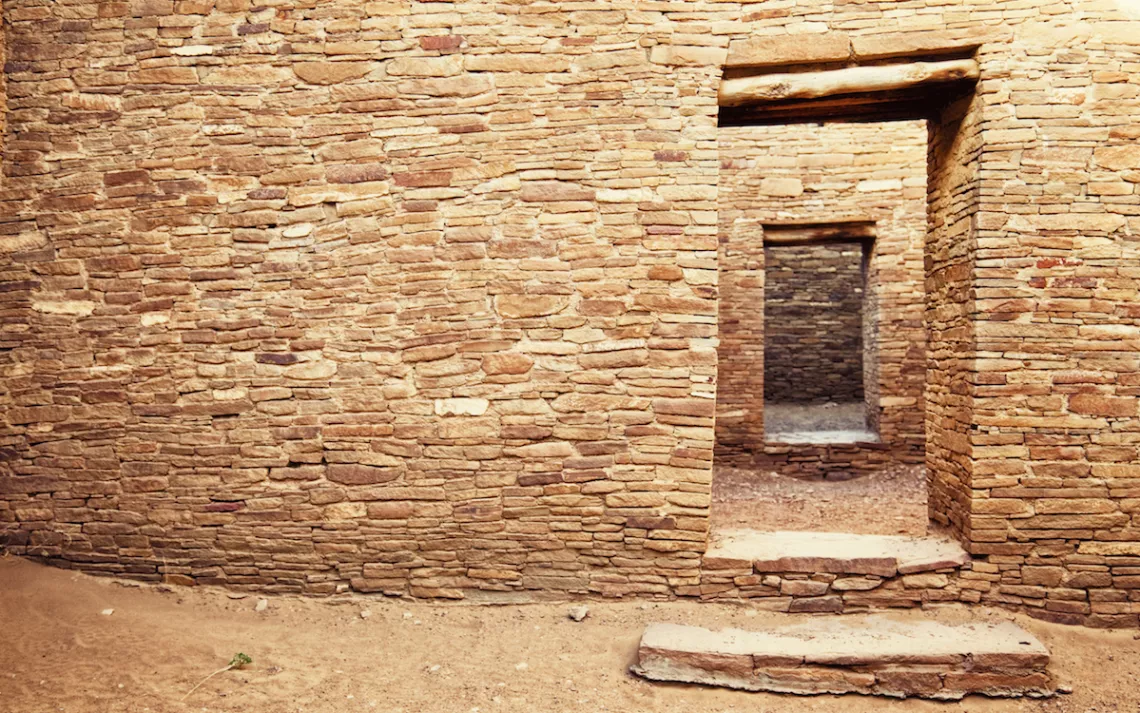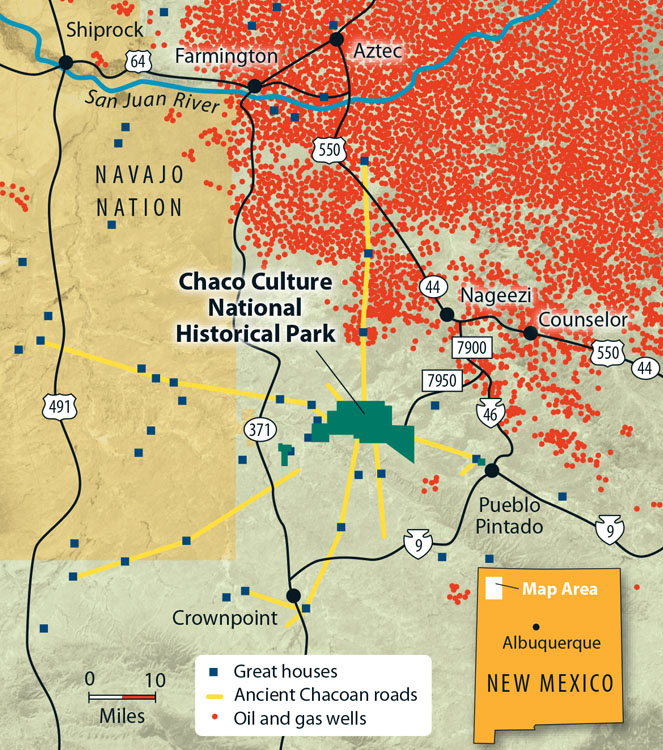Legal Setback for Defenders of Chaco
Judge says drilling is cool if cultural artifacts aren’t physically destroyed

Phoot by powerofforever/iStock
Defenders of the rich cultural resources of New Mexico’s Greater Chaco Region suffered a legal defeat this week when U.S. District Court Judge James Browning rejected their arguments against new oil and gas drilling in the vicinity of Chaco Culture National Historic Park. The loss was especially surprising given that, only weeks ago, the same judge seemed to side with some of their key arguments.
“It came as both a surprise and a disappointment,” says Kyle Tisdel, an attorney with the Western Environmental Law Center, which helped represent plaintiffs Diné Citizens Against Ruining Our Environment, the San Juan Citizens Alliance, WildEarth Guardians, and the Natural Resources Defense Council. The court’s earlier order, filed March 31, had suggested that the Bureau of Land Management had not adequately considered the potential impact of drilling in the area to its many cultural sites. As I write in the current issue of Sierra, those sites are not limited to the national historic park that houses some of the more spectacular buildings from the prime of Chacoan culture, roughly 900 years ago. In fact they are scattered widely over the San Juan Basin in the form of decaying “great houses,” shrines, and remnants of ancient ceremonial roads. The map below gives some indication of the widespread nature of the artifacts, although the great houses noted are only the largest among thousands of other traces of the ancestors of today’s Pueblo and Navajo people.

Oil and gas wells near Chaco Canyon National Historical Park in New Mexico
Judge Browning’s decision this week, however, totally reversed his earlier decision, ruling now that the extensive oil and gas drilling in the area violated neither the National Historic Preservation Act nor the National Environmental Policy Act. The only clue to his change of heart comes in a footnote, in which he suggests that as long as the BLM sees to it that there is a fence or some kind of barrier to protect cultural resources from physical destruction, drilling can proceed. He is dismissive of indirect and cumulative effects of the drilling on Chaco, writing, for example:
[T]he BLM’s failure to consider how air, light, and noise pollution might affect Chaco Park and its satellites is unlikely to lead to irreparable harm or even serious harm to the historic property in the interim between this order and the agency’s updated decision. All of those individuals who visit those historic sites might be inconvenienced, or their experience might be less enjoyable, but that harm does not outweigh the potential hundreds of thousands to millions of dollars of economic harm the operators will endure.
It’s still too early to judge the effect of the ruling, says Tisdel, as there are many other moving parts regarding drilling in the San Juan Basin. Among these is the surprise early March order by Interior Secretary Ryan Zinke, postponing all oil and gas lease activity in the Chaco region pending further analysis of the area’s many cultural artifacts. Clearly influencing Zinke’s decision was opposition to further drilling from New Mexico’s legislature, Navajo Nation president Russell Begaye and the All Pueblo Council of Governors, as well as the state’s entire congressional delegation. So while further drilling in the landscape its inhabitants hold sacred has cleared a legal hurdle, formidable political barriers remain as well.
 The Magazine of The Sierra Club
The Magazine of The Sierra Club



